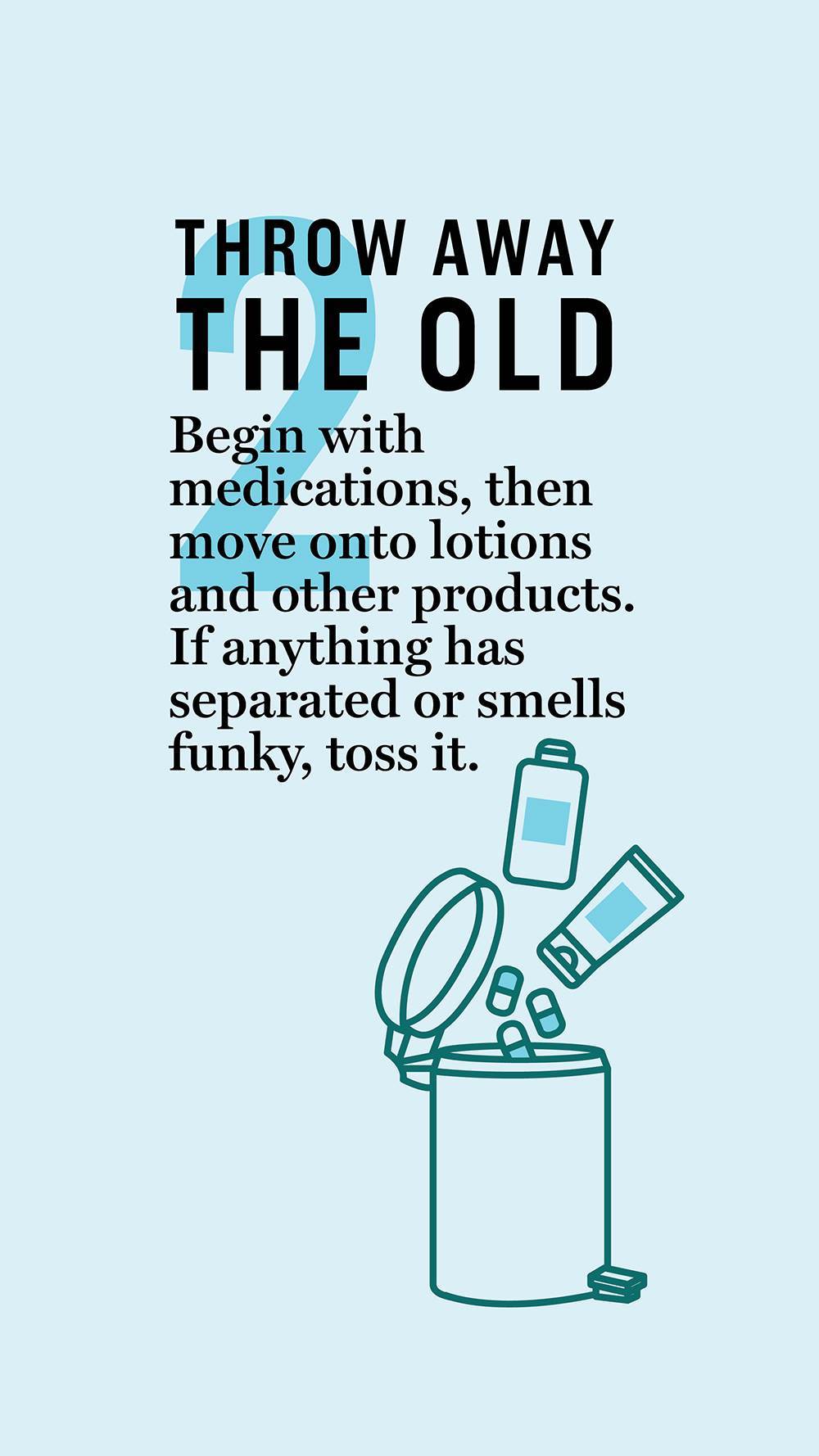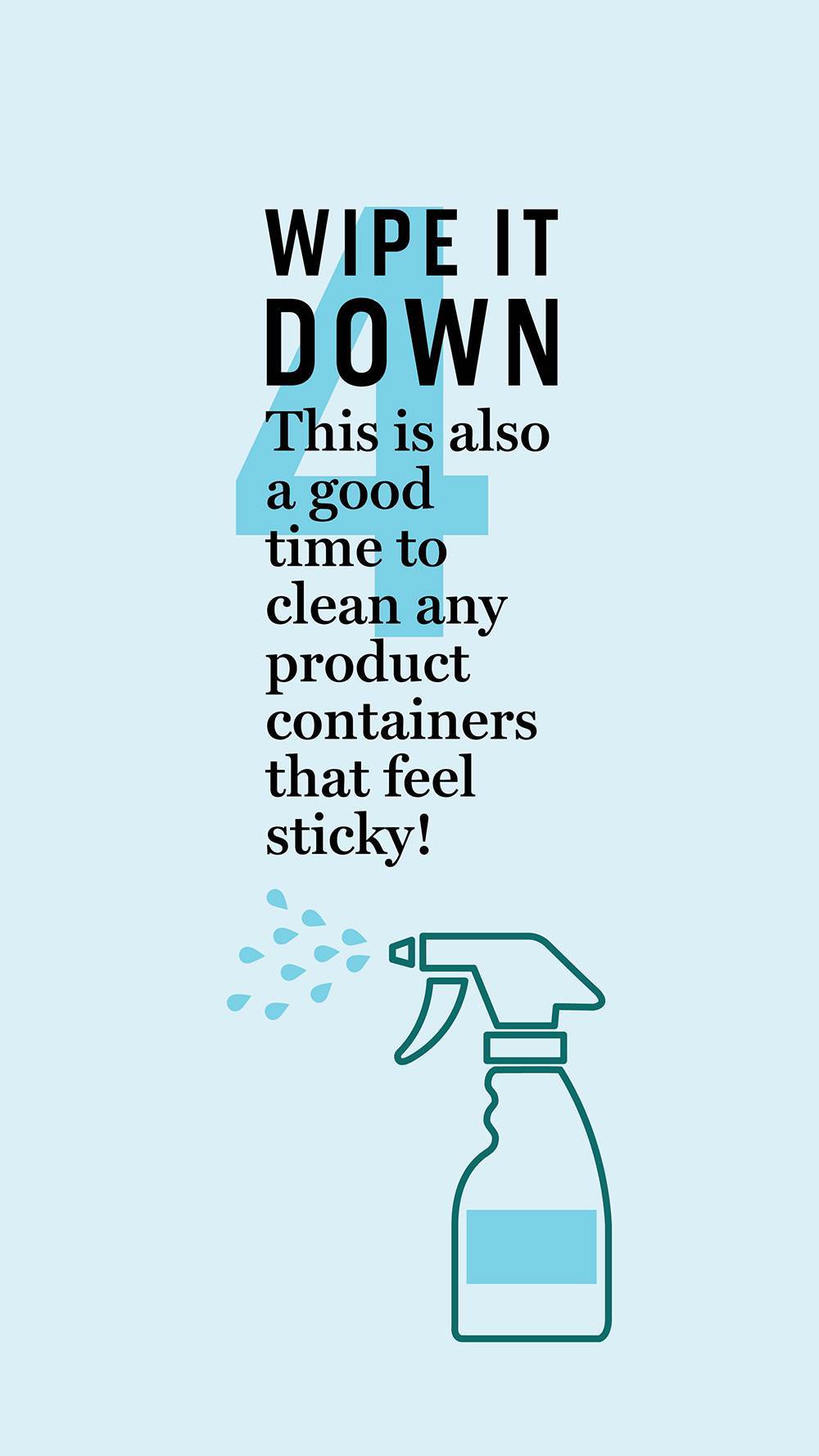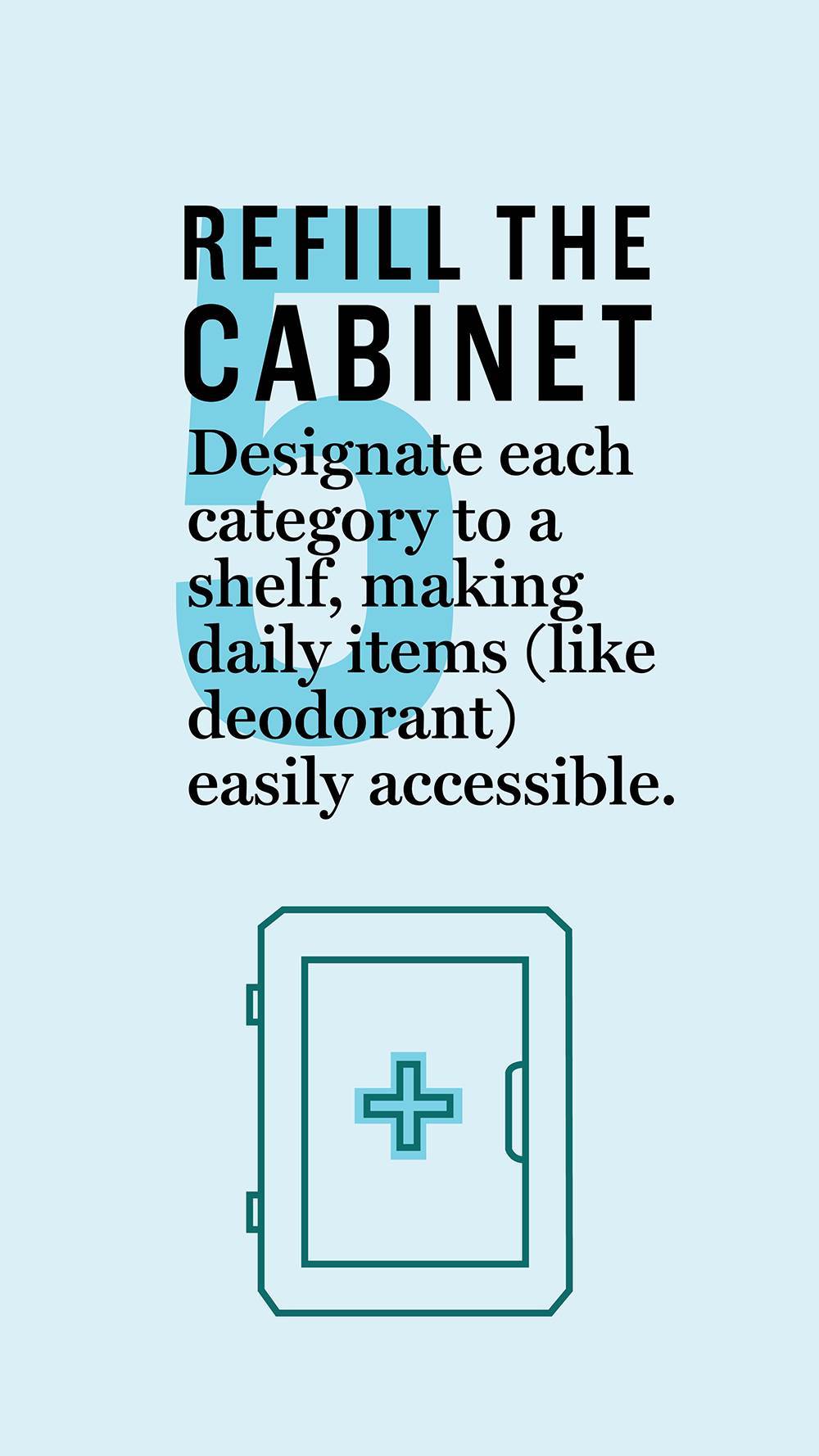We'll show you what to do, step by step.
If you're on a mission to a more organised life, you’ve probably been super busy decluttering nearly all areas of your home. What about your medicine cabinet? Although it may not be on the top of your priority list, giving it a good overhaul can be beneficial to your sanity, your pocketbook, and your health.
An organised medicine cabinet can save you time and simplify your morning and nighttime routines because you won’t have to hunt around for the products you use on a daily basis, says organiser Wendy Silberstein. “In addition, because inventory is visible, you can avoid unnecessary spending on items you already have on hand,” she says.
If that’s still not enough to convince you to get started, think about the health benefits. A well-organised medicine cabinet means you’ll be able to get to medical supplies quickly when you need them. You also won’t be at risk of taking expired meds. And because products are so accessible, you’ll be more likely to do things that can help improve your health, like flossing and removing your makeup every night.
Even better news, organising your medicine cabinet shouldn’t take long—give it an hour, tops. Follow these steps to get it done:






Start from scratch.
Remove all of the products from your medicine cabinet and categorise them into groups on the counter, floor or table. For example, put your first aid items in one pile, medications in another, your dental care items in their own pile, and so on.
Throw away the old.
Now it’s time to purge. Work with the medications first. Go through the pile and take out any expired or unwanted medications. But don’t just toss them in the trash or flush them down the toilet. If thrown out, kids or animals could find and ingest the medicine. And if you flush (or pour down the sink), the medication can end up in the water system and affect the environment. So take the time to dispose of meds properly. The best ways are to follow the disposal instructions on the drug label or patient information insert, or contact your pharmacist or your council's rubbish and recycling service to find out if there’s a drug take-back program available in your community.
If you must dispose of meds at home, the Food and Drug Administration (FDA) advises to remove the medication from its container and mix it (don’t crush it) with something like kitty litter, dirt, or used coffee grounds. Place the mixture in a sealed plastic bag and throw it in your trash. Don’t forget to scratch out all personal info on the label or packaging, and then throw out or recycle the containers.
Once you’ve properly disposed of the medications, toss the other expired products. In addition to items that are past their expiration date, discard anything that is questionable (for instance, the date has rubbed off or you have no idea how long you’ve had the product), and anything that has changed colour, separated, or smells weird. Also, get rid of stuff you never use, like that eye cream that turned out to be a dud. No sense in keeping items that will only take up space and collect dust.
Rehome items that belong elsewhere.
Speaking of not leaving items that will only take up valuable space, go through your piles and look for stuff that doesn’t really belong in the medicine cabinet but somehow ended up there. Bulky items, like curling irons and huge bottles of shampoo, should be contained in clear labeled bins under the sink, on a shelving unit, in bathroom drawers or in other sections of your bathroom, Silberstein says. “Dedicate the medicine cabinet to 'grab n go' items that do not take up a tonne of vertical space," she says.
Another category that needs a new home is medications. Yes, as ironic as it seems, they don’t belong in the medicine cabinet. The heat and humidity in the bathroom can damage your meds, making them less effective or causing them to go bad before their expiration date. Medications are best stored in a cool, dry place, out of reach and sight of children. Some good spots are in a locked drawer or cabinet in your bedroom, or in a storage box on the top shelf of your closet.
Wipe it down.
“Bathroom spaces can get really grimy with dust and humidity, so now is your opportunity to give your medicine cabinet a good cleaning,” says professional organiser MaryJo Monroe. Depending on how dirty your cabinet is, either wipe down the shelves or remove them and wash them in hot, soapy water. Don’t forget to clean the top, bottom, and back wall of the cabinet. This is also a good time to wipe down any product containers that look or feel sticky.
Refill the cabinet.
When it comes time to put items back in the medicine cabinet, don’t just put everything back in a neat but haphazard way. Remember, your goal is to get (and stay) organised. “The key is to group like with like so you can quickly find what you want without hunting around for it,” says Monroe. A good way to do that is to think like one of the big-box stores and designate one shelf or section per category, she says. So, for instance, all of your eye care products would go together, dental hygiene staples would sit on the same shelf, etc.
You also want to organise your medicine cabinet in a way that makes your life easier. Your daily routine items should be easily accessible; therefore, your toiletries, dental products, deodorants and shaving products can be organised on the bottom shelf, Silberstein says. The second shelf can be home to first aid supplies, such as gauze, bandages, and antibiotic ointment. Your top shelf should be dedicated to products you don’t use as often or want to keep away from children, like eye drops and nasal spray.
“As you are finding homes for your various categories, make sure you leave enough space for the occasional purchase of additional products,” Monroe says. “That way, your organising system won’t fall apart if you decide to buy a new bottle of perfume."
Keep it organised.
Give yourself a pat on the back! You’re done cleaning and organising your medicine cabinet. The good news is, a few simple actions will keep you from having to do a major clean (or search-and-find mission next time you need tweezers). First, always put products back in their place immediately after using them. And keep a bottle of disinfectant wipes under your sink to make it easy to wipe down the shelves of your medicine cabinet periodically. Also, do a mini-purge every so often. “Sort through the products once or twice a year to weed out the old, expired, or unused ones,” Monroe says. Ta-da! That’s it.









